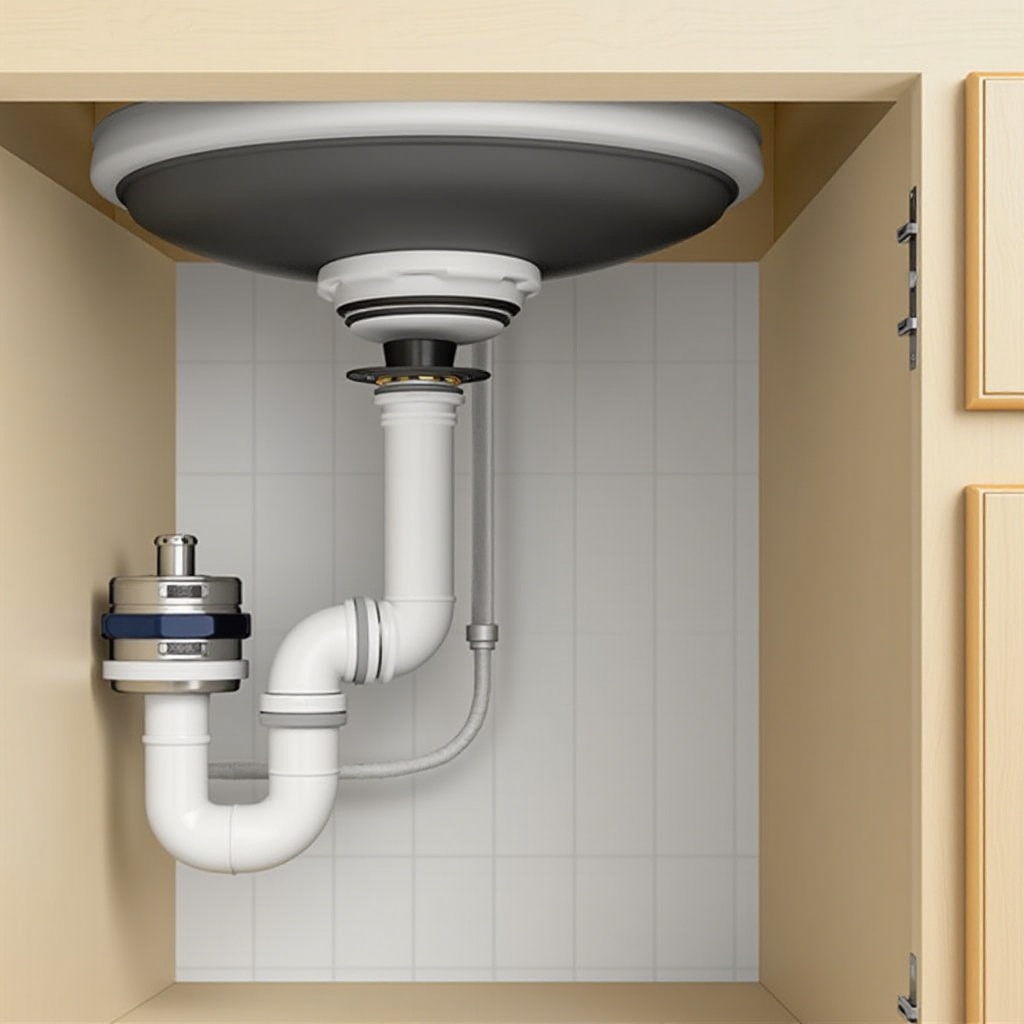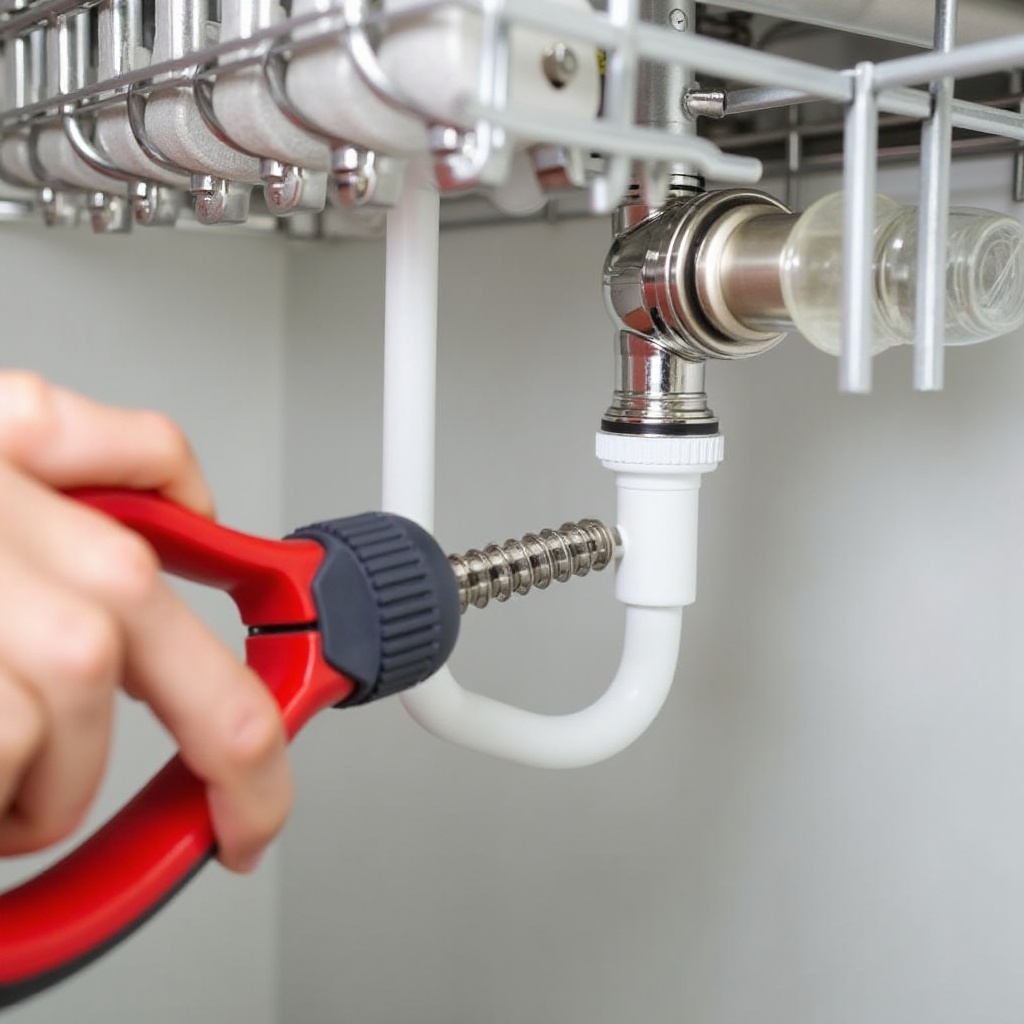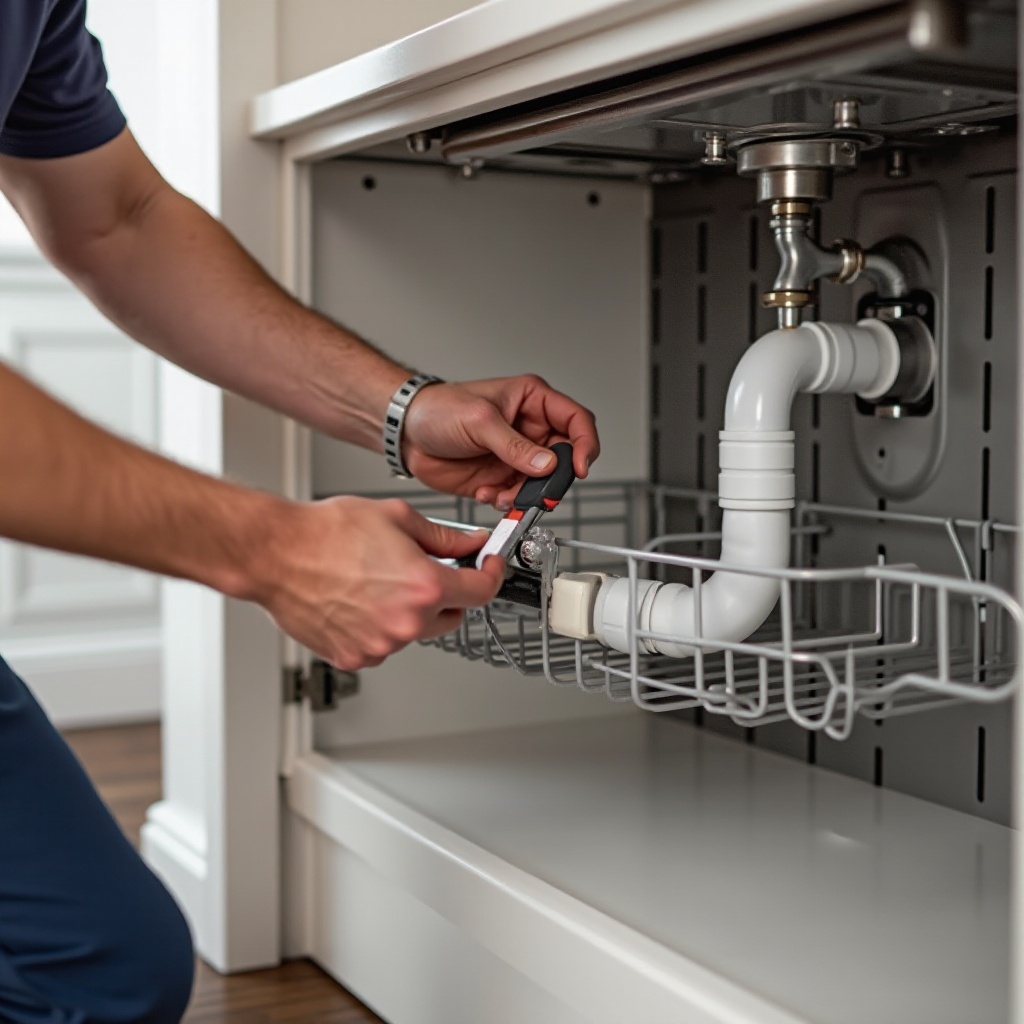Introduction
Connecting your dishwasher drain hose to the sink is an essential task for the efficient removal of wastewater from your dishwasher. This guide will walk you through the process step-by-step, ensuring you get a secure and leak-free connection. With the right tools and a bit of patience, you can achieve a professional-quality installation.

Tools and Materials Needed
Before starting, gather all necessary tools and materials:- Screwdriver- Hose clamp- Pliers- Bucket- Teflon tape- Dishwasher drain hose (if not already installed)
Having these items on hand will streamline the installation process and help avoid unnecessary interruptions.
Step-by-Step Guide for Connecting Dishwasher Drain Hose to Sink
Step 1: Prepare the Dishwasher Drain Hose
- Measure the length of the dishwasher drain hose, ensuring it reaches the sink drain without tension or kinks.
- Trim the hose if necessary using a utility knife. Ensure a clean, straight cut to promote a secure attachment.
- Attach a hose clamp to one end of the drain hose, ensuring it is loose enough to fit over the drain outlet on the dishwasher.
Step 2: Attach the Hose to the Dishwasher
- Locate the drain outlet on the back of the dishwasher, which is typically near the bottom.
- Slide the prepared end of the hose over the drain outlet.
- Tighten the hose clamp securely using a screwdriver to ensure it won't slip off during operation.
With the hose securely attached to the dishwasher, you can now focus on connecting it to the sink drain.
Step 3: Connect the Hose to the Sink Drain
- Identify the appropriate connection point on your sink, either the garbage disposal unit or a dedicated dishwasher tailpiece on your sink's drain pipe.
- There are two common methods for connecting the hose:
- Air Gap Method:
- Install an air gap on your sink's countertop. This prevents dirty water from siphoning back into the dishwasher.
- Connect one end of a short hose to the air gap and the other to the drain hose, securing both ends with hose clamps.
- High Loop Method:
- Create a high loop in the drain hose by attaching it to the underside of the countertop with a zip tie or clamp. This loop helps prevent backflow.
- Attach the hose directly to the sink drain or garbage disposal using a hose clamp.
Both methods offer effective ways to prevent backflow and ensure smooth drainage.
Step 4: Ensure A Tight Connection
- Check all hose clamps to make sure they are tightly secured and not over-tightened, which can cause hose damage.
- Run a test cycle on the dishwasher to check for leaks at both connection points.
- If any leaks are detected, tighten the clamps further or recheck the hose alignments.
Proper attachment and secure connections are crucial for preventing future issues.

Common Problems and Their Solutions
After ensuring a tight connection, it is essential to be aware of potential issues that may arise over time. Regular maintenance and prompt troubleshooting can help keep your dishwasher functioning smoothly.
Troubleshooting Hose Kinks and Leaks
- If the hose is kinked, straighten it out and ensure it has a smooth, unrestricted path.
- For leaks, first check the clamps to ensure they are tight and secure. If leakage persists, consider using Teflon tape around the fitting.
Addressing Blockages and Backflow Issues
- Regularly clean out any debris from the garbage disposal or sink drain to prevent blockages.
- Ensure the high loop or air gap is correctly implemented to prevent backflow. Regular maintenance can help avoid these problems.
Maintenance and Best Practices
To keep your dishwasher running smoothly:- Check hose connections regularly for signs of wear or leaks.- Clean the filter on your dishwasher as per the manufacturer's instructions.- Flush the drain hose with hot water and vinegar periodically to clear any built-up residue.
These maintenance steps can help extend the life of your dishwasher and its components.

Conclusion
Successfully connecting your dishwasher drain hose to the sink involves careful measurement, secure connections, and regular maintenance. By following this guide, you can ensure your dishwasher operates efficiently and without issues. Remember to always refer to your manufacturer's instructions for specific guidelines related to your dishwasher model.
Frequently Asked Questions
Can you connect a dishwasher drain hose without using an air gap?
Yes, you can use the high loop method instead. It provides an effective way to prevent backflow without needing an air gap.
What should I do if the hose length is too short?
You can purchase a longer dishwasher drain hose from hardware stores or online retailers. Ensure it is compatible with your dishwasher model.
How often should I check the drain hose for maintenance?
It's advisable to check the drain hose every six months for signs of wear, kinks, or leaks, and address any issues promptly.
